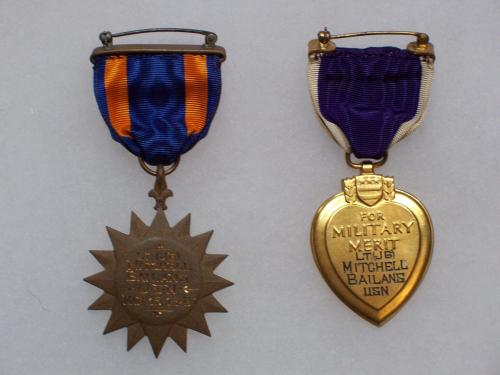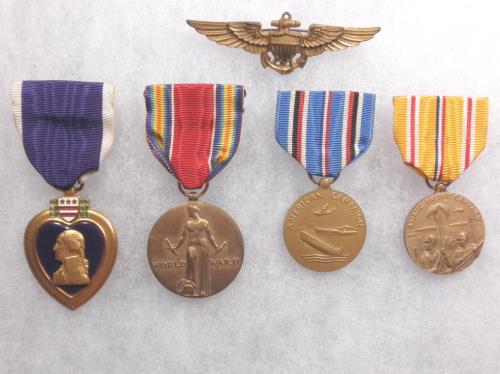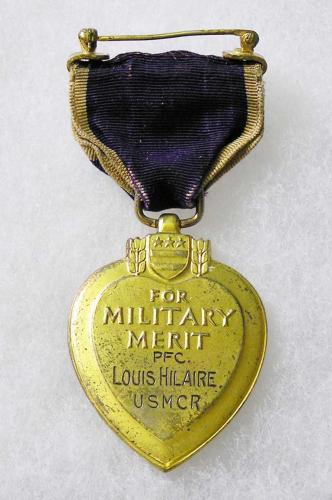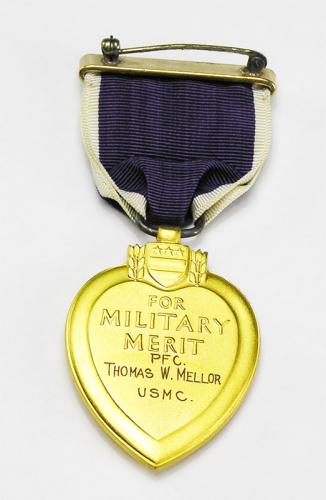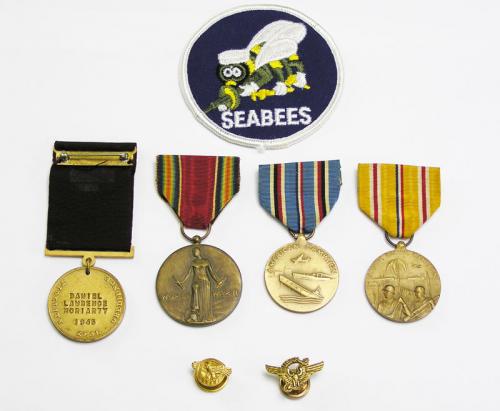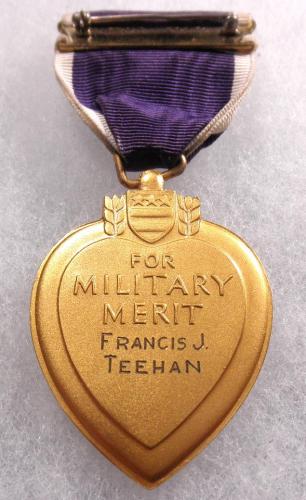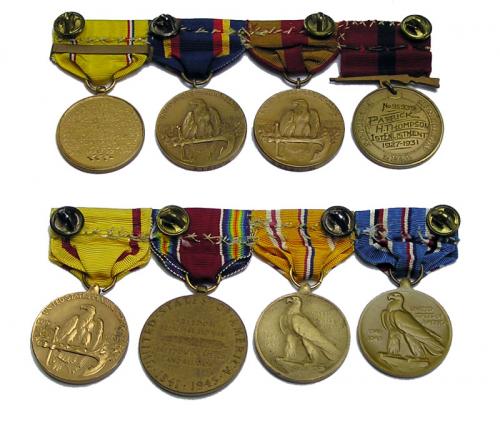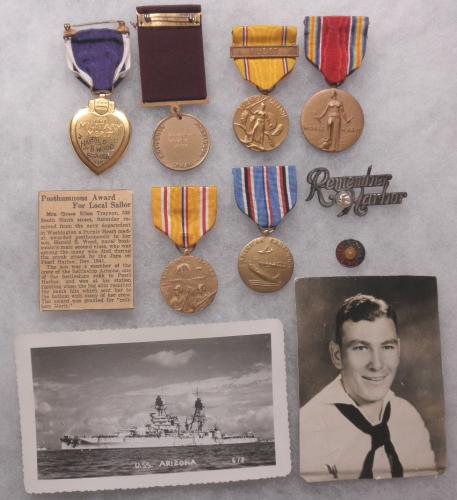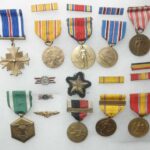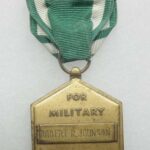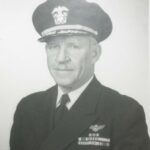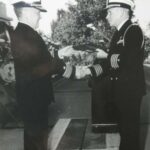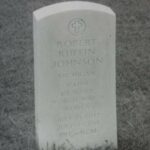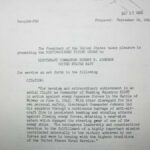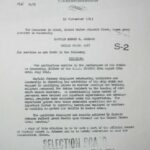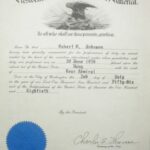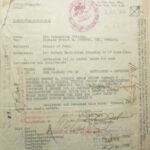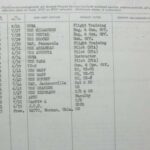This is a huge group of medals and original paperwork to Robert Ruffin Johnson who retired from the US Navy in 1956 with the rank of Rear Admiral. This group contains his slot brooch Distinguished Flying Cross, Navy and Marine Corps Commendation medal inscribed on the reverse "ROBERT R. JOHNSON" in its original plastic top presentation case, full wrap brooch Second Nicaraguan Campaign medal edge numbered M.No. 1080, American Defense medal with FLEET clasp and ribbon bar in original cardboard box, American Campaign medal and ribbon bar in original cardboard box, WW2 Victory medal and ribbon bar in original cardboard box, Army of Occupation medal with ASIA clasp, and National Defense medal. Also included are a sweetheart size pinback Naval Aviator wings, two "E" for Excellance in Production pins, Navy Presidetial unit Citation ribbon bar, and a silver bullion embroidered Line Officer's star. There is a three ring binder full of about 35 original documents, orders, citations and photos.
Robert Johnson was born July 15, 1902 in Detroit, Michigan. He attended Detroit's Northwestern High School, graduating in June, 1918. He attended Detroit Junior College and subsequently entered the US Naval Academy in June, 1922, and he graduated in 1926.
Upon graduation, he derved as electrical officeron the USS Milwaukee until June, 1927 which was during the Second Nicaraguan Campaign. He was then transferred to the USS Vestral and served in the engineering and gunnery departments. He served on the USS Hopkins and USS Brooks from June 1928 until May 1929. In February 1930, he graduated from Pensacola as a Naval Aviator, #3606.
Upon receiving his Navy wings, he was assigned to the battleship USS Arkansas as an observation pilot. Later he flew with a scouting squadron from the USS Augusta, CA-31. He was then transferred to VO Squadron Two and served as ship's aviator and gunnery observer on USS Arkansas. When VO-2 was changed to VS-10, he was transferred to the USS Augusta where he served as ship's aviator and staff pilot until June 1932. He then was assigned to the Naval Academy as an instructor until September, 1934.
From Annapolis, he went to the famous Hi-Hat dive bombing squadron, VF-1, aboard the USS Saratoga, CV-3, where he served as assistant operations officer. He then went to Patrol Squadron Five at Coco Solo, Canal Zone. During that time from May, 1936 to May 1939, he served as gunnery and operations or flight officer.
He became executive officer of Scouting Squadron 72 on USS Wasp, CV-7. In January 1940, he relieved Capt. D.E. Wilcox as commanding officer of Scouting Squadron 71 on the Wasp. He was the first member of his class to command a squadron attached to a carrier.
In September, 1941, he was ordered to command Bombing Squadron Eight on the USS Hornet, CV-8, then under construction. After December 7, 1941, the Hornet was transferred to the Pacific. He was on board when the Hornet launched the Doolittle raid against Japan on April 18, 1942.
He was on Hornet during the Battle of Midway as commander of VB-8. He was awarded the Distinguished Flying Cross while commanding officer of Bombing Squadron Eight on the USS Hornet during the Battle of Midway. One of his pilots in Section 1 was awarded the Navy Cross for that action. It was during this action that the entire VT-8 was shot down and everyone was killed except Ensign George Gay.
After Midway, Johnson was transferred to Navy staff in Hawaii, thence to NAS Jacksonville as Superintendent of Aviation Training, where he was in charge of all field air operations. On June 26, 1943 he assumed the duties of Executive Officer of NAS Jacksonville.
Captain Johnson was transferred to command of the training ship USS Charger, CVE-30 August 1944 until July 1945. He was awarded the Navy Commendation Ribbon for that service. In July 1945 he was assigned to the Amphibeous Forces, Pacific Fleet as Commander of an Air Support Unit, and later became Chief of Staff for Admiral Pride, and subsequently relieved him as Commander Air Support Control Units, Pacific Fleet.
In June 1947, he was transferred stateside where he remained until his retirement June 30, 1956 as rear Admiral.
